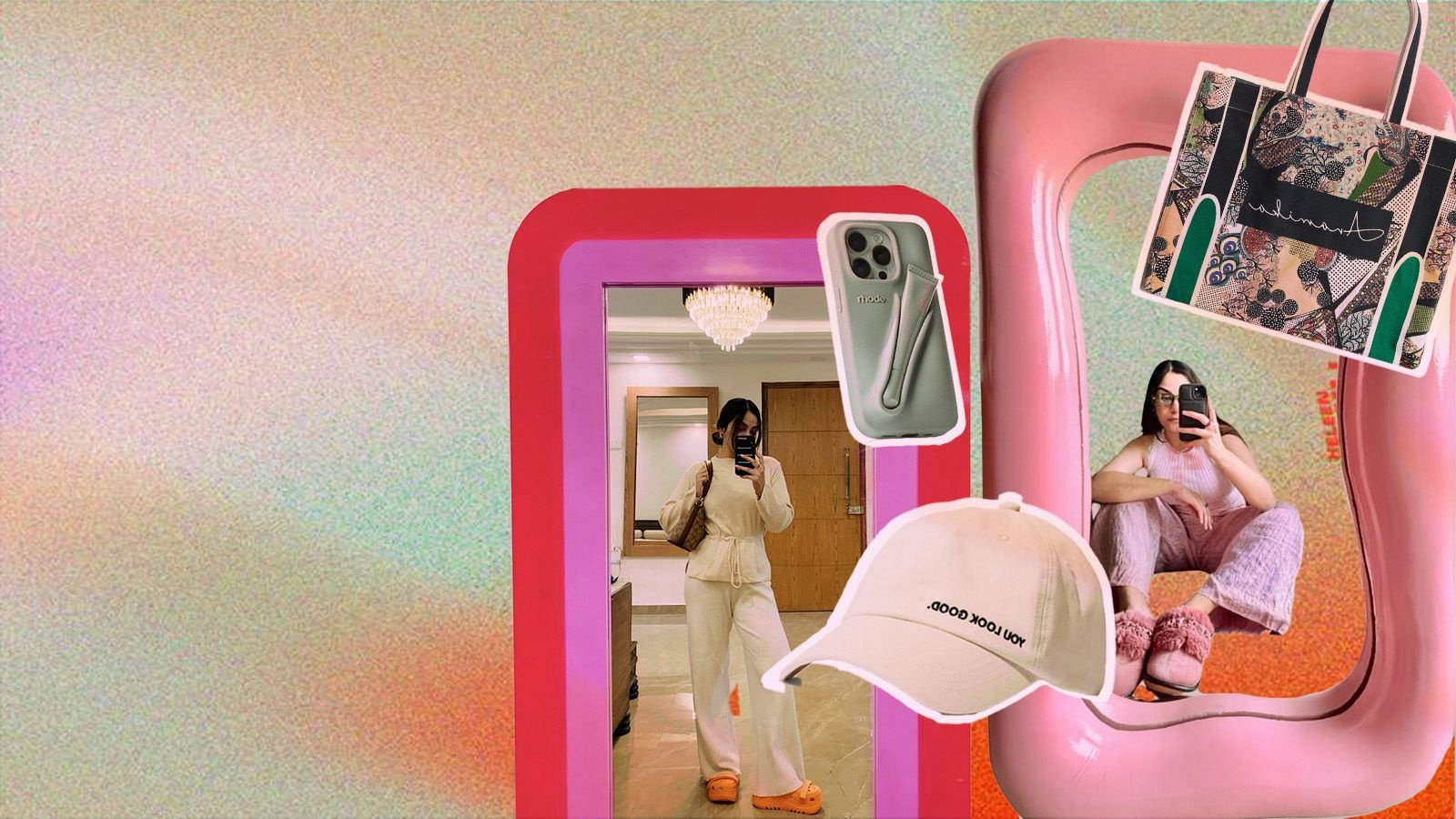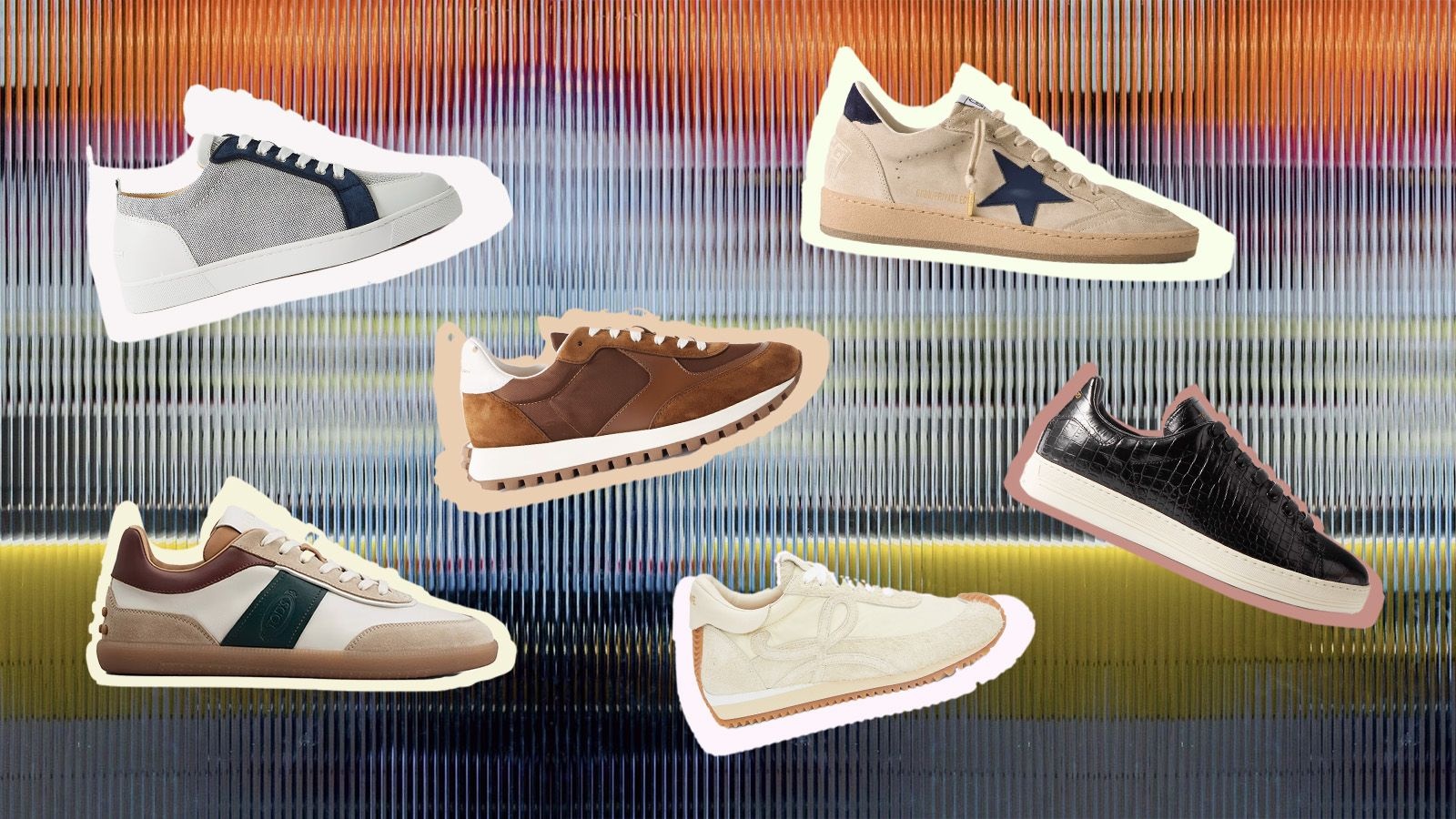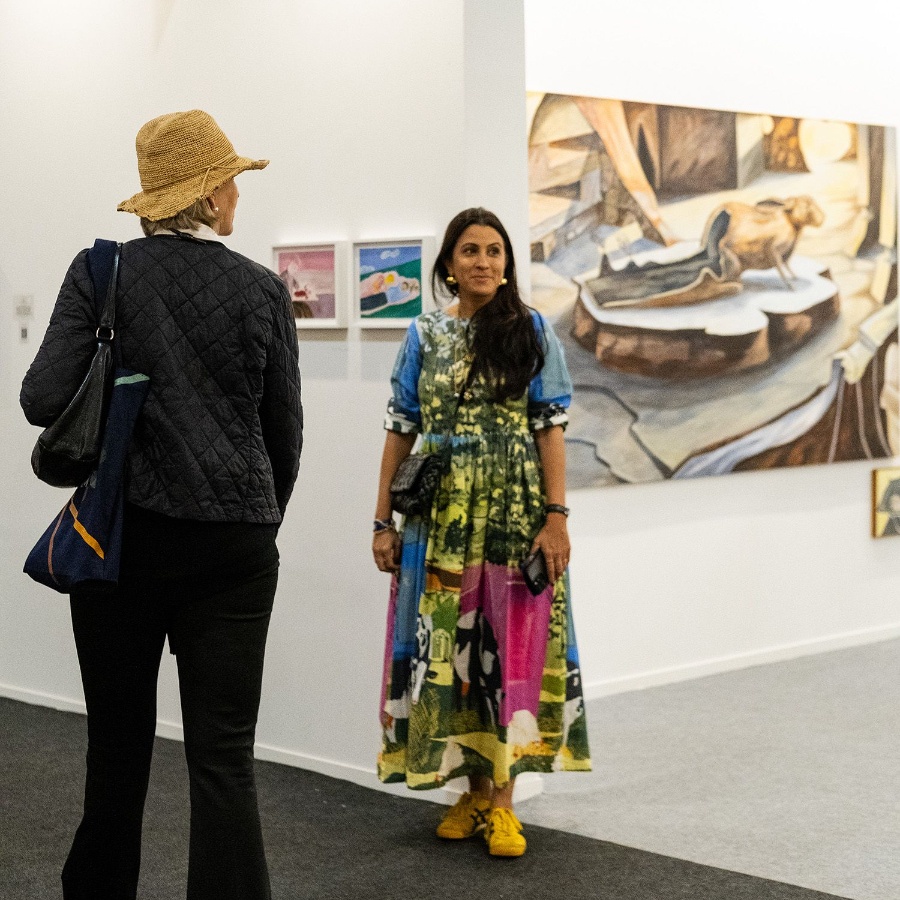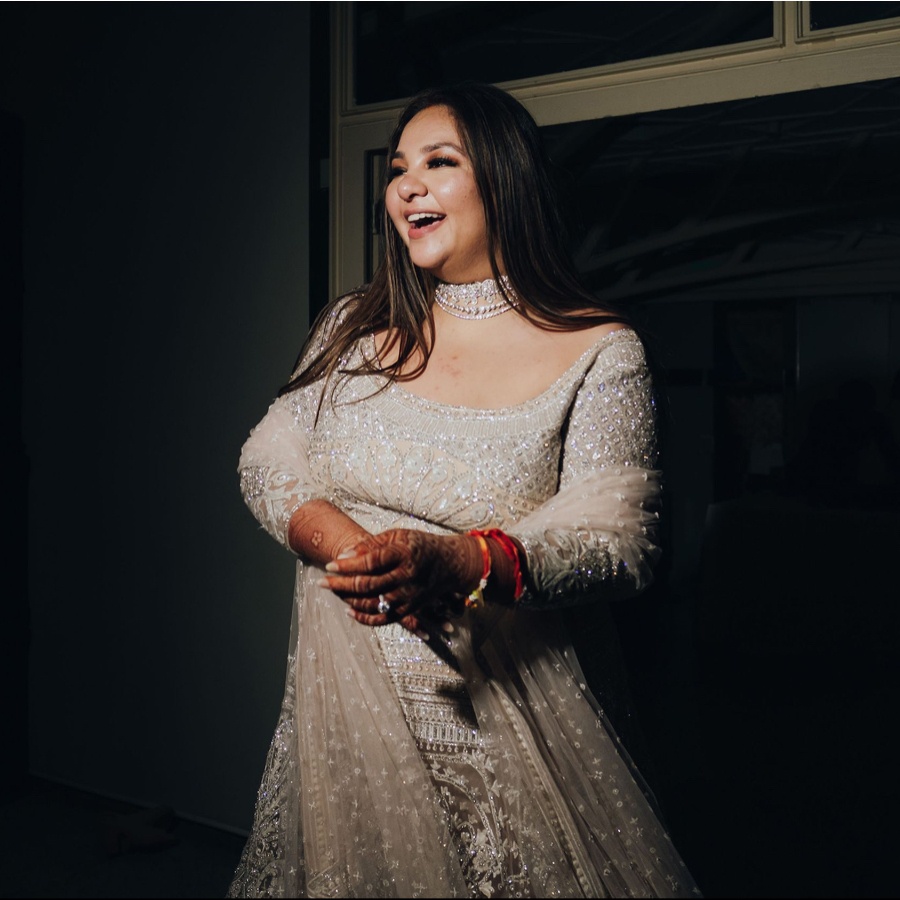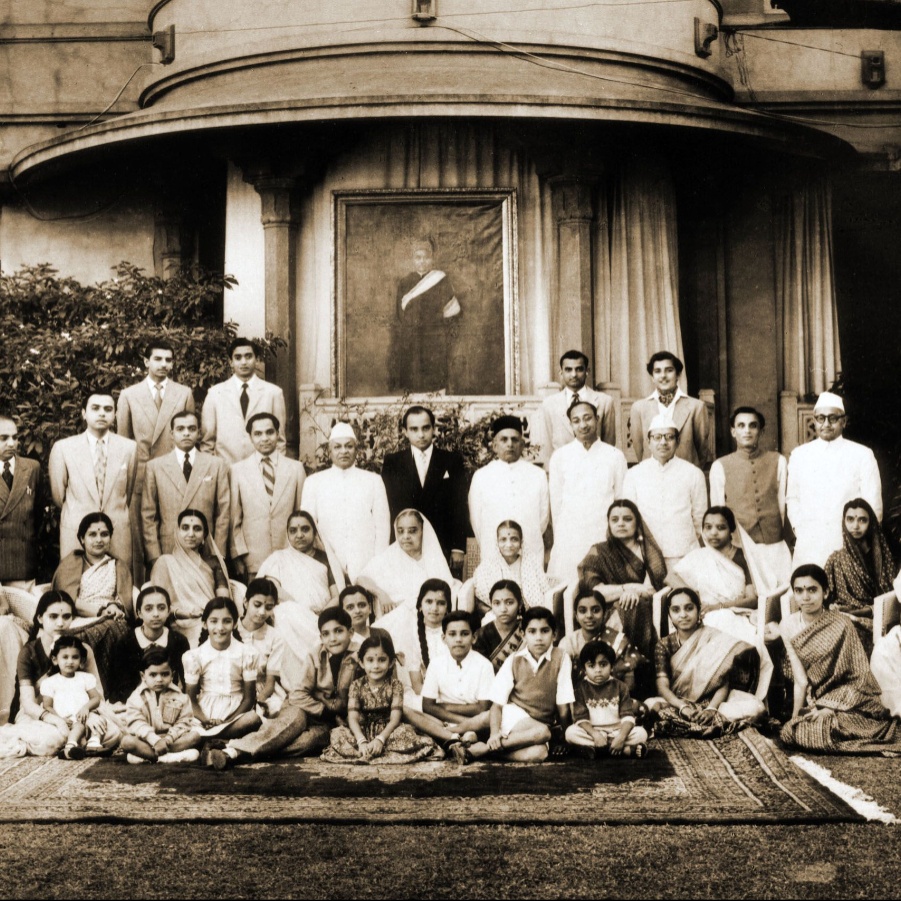When the press invites for the now sold-out H&M x Anamika Khanna collection came our way, the first thing I noticed was that the tote bag featured a mirror image of the brand name. For mirror selfies, surely? Indeed, confirms the designer Anamika Khanna. “I am glad that you noticed this detail. The mirrored logo was a conscious design choice, especially for today’s selfie-driven culture. The idea was to ensure the logo appears perfectly when reflected, making it a statement piece that resonates with how people engage with fashion and social media today,” she tells The Nod.
Khanna isn’t the only one thinking about how her wares will look on the gazillion #MirrorSelfies on Instagram (12,389,502 to be precise, at the time of writing this). And how can she be, considering fashion (actually, everything) today is being peddled to an audience that is constantly online? Everything, from the viral Rhode phone cover and Glossier’s signature ‘You look good’ mirrors and merch to Stanley tumblers, is in many ways, tethered to our obsession with recording it for Instagram.
So, in a world where social media cachet is everything, are people also now buying things solely for the purpose of mirror selfies? When I asked my Instagram audience if they had ever shopped keeping that in mind, the answer was a resounding yes. The items ranged from phone covers and charms to aesthetic mirrors, corsets, kaftans, and “pretty much everything in my closet!” Many young Indian designers said they consider selfies when designing their pieces—Anoosha Gupta of ’97-Motifs and Sravanthi Elango of SIA by Sravanthi said they make fun, colourful clothes intentionally so that they are selfie-ready. Nandini Kedia Sheth created textile jewellery for her brand Araayeh to match her clothing when she realised her clients had become increasingly detail-oriented about completing their look. And Ridhi Asrani’s wind chime earrings have been made keeping in mind selfies as well as ASMR videos.
Sisters Erica and Ishika Sharma admit that mirror selfies are the very reason they launched their statement mirror brand, HomieHue, last year. “As fashion girls ourselves, we realised that an aesthetic mirror has become as essential as a camera today, because everyone wants pictures without the fuss of a shoot,” says Erica. “So many of our clients are fashion influencers. Our mirrors are being used as fun backdrops in their content, vlogs, and daily selfies. In fact, the demand for full-length mirrors is 75 per cent higher than for smaller sizes, and the popularity of full-length daily OOTDs is the main reason for that,” adds Ishika.
And those who haven’t yet designed keeping selfies in mind are now starting to think it might be time. “While we did not plan it that way, our hot-pink sari became really popular for mirror selfies. I’ve never thought about it when designing a collection—it hasn’t fully trickled into occasion wear yet—but perhaps I should,” adds Palak Shah, founder and CEO of Ekaya Banaras.
When the mirror selfie exploded during the pandemic, it was because most people were confined to their homes and used this as a way to share their outfits. Today, it’s next to impossible to attend an event, party, wedding, enter an elevator or simply take a bathroom break at a trendy new restaurant (remember when a mirror selfie from the bathroom of Mayfair’s members-only club Annabel’s was a flex of its own kind?) without an aesthetic mirror calling out to you to stop, snap, and share. And everyone from Kelly Rutherford to Khushi Kapoor is doing it.
Fashion influencer Saanchi Gilani goes a step ahead and calls mirror selfies her whole personality. Because, despite being in the business of content creation, she feels that you don’t always have the time or inclination to indulge in a full-blown shoot. “So this is just easier and more relatable. You don’t need to rely on anyone to click your photos. You can optimise your best angles and indulge in as many retakes as you like,” she says, adding that she has even received collaboration requests from fashion brands where the brief is for her to post mirror selfies in the given outfits.
It’s the kind of post that shows you care about what you’re wearing, but only just enough to be cool—there is a certain carefree insouciance attached to the photograph. It’s meant to appear almost like an afterthought, something you clicked just as you were dashing out of the house. But don’t be fooled: there is a lot more planning that goes behind those images now. “I won’t lie, it has become far more taxing,” admits Gilani. “It’s so much about the aesthetic, the background, and the mood. You may click it just for your outfit, but people notice everything, from your manicure and rings to your phone cover.”
Khanna feels that the rise of mirror selfies—and of products designed for them—is telling of a larger aspect. “They empower one to express their style by being their own stylist and photographer, making fashion more accessible and personal. It lends authenticity and relatability in today’s highly curated digital world. And it’s a great opportunity for brands to create statement pieces that not only embody their brand aesthetic but give it a present-day playful and modern twist.”
